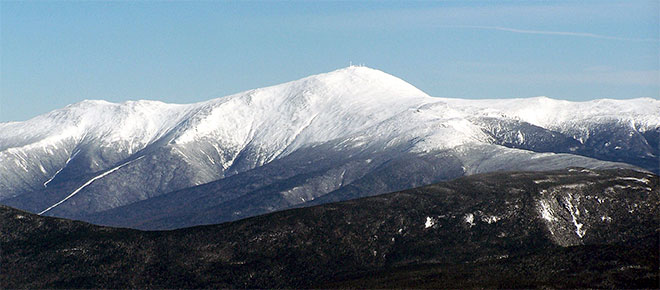Hundreds of people, many very experienced climbers, have died of exposure in these mountains because they did not fully understand the power of this mountain environment or were caught off-guard without the necessary gear and clothing to survive what the mountains unleashed upon them.
There are places in the Great North Woods of Northern New Hampshire where ice can be found year-round.

This load is designed to keep me alive below tree-line in all weather for 24-hours in reasonable survival comfort and for 72-hours should I become injured or for some reason cannot make it back to my truck as planned. It takes into account my fieldcraft and survival skills, the ability to make a quick shelter, a fire, signal would-be rescuers, walk out during the night, or hunker down for several days due to injury, darkness, or other unforeseen happenstance.
Warmer Weather Months
Day Trips
(Approximately May 1 to October 31) – for about 1-month on either end of this time frame – months of May and October – I may add the following due to the potential for cold wet conditions and possible snowfall.
- a wool sweater
- light capiline long-johns
- wool cap
While removing the insect repellent, since there are generally few biting insect pests to speak of during May and October
From about November 1 to April 30 you will need to be prepared for full-on northern winter conditions, which is a whole new game requiring additional and sometimes specialized gear.
Pack
Pack Cover, waterproof
Rain Pants
Arktis Parker, rain resistant
boonie hat
BDU pants and quick-dry shorts for underwear (double as swim trunks)
Capiline shirt
fleece jacket
Limmer Custom Made Boots with 3-pairs smartwool socks each foot.
5-ft x 7-ft “space” blanket
Paracord, 50-foot hank
whistle
measuring tape, 4-feet
55 gallon drum liner
Hobo Stove (wood, leaves, pine cones, etc)
Titanium Pot and Skillet
FireSteel – Gobspark Armegeddon
Cotton Balls mixed with petroleum jelly
Matches
Five 10-Round .308 Magazines (one in rifle)
Gunsite Scout .308 Rifle
Beach Chair Bag (for concealed rifle)
ear plugs
Printed target and pushpins
Compass
Button compasses (1 in pack, one in BDU’s)
Topographic Map of Area
Satellite Image of Area
Bright pink surveyors marking tape, 3-feet
Multi-tool
Fixed blade knife
Tomahawk
Head Lamp
flashlight
Toggle light
8-power binoculars
Mechanical Pencil
Pencil leads
Field Book
Go-Pro Camera, 1 spare battery, 1 spare memory card
Digital Camera, 1 spare battery, 1 spare memory card
Camera Tripod
6 AA Bateries as spares for headlamp, GPS unit, and flashlight
1 Gallon water
lunch
Emergency food, 1-day supply
Insect Repellent
Note: I will add to this list as my scouting skills and equipment advance.
It is my belief that the vast majority of people are low on the field craft side of things while concentrating on firearms skills and gear. In my humble opinion this is a lopsided approach and overall fieldcraft trumps gear whoring in the scheme of things.
That’s my opinion and I’m sticking to it.